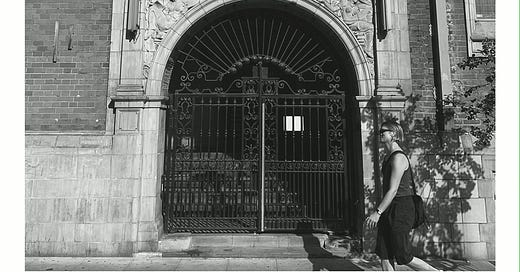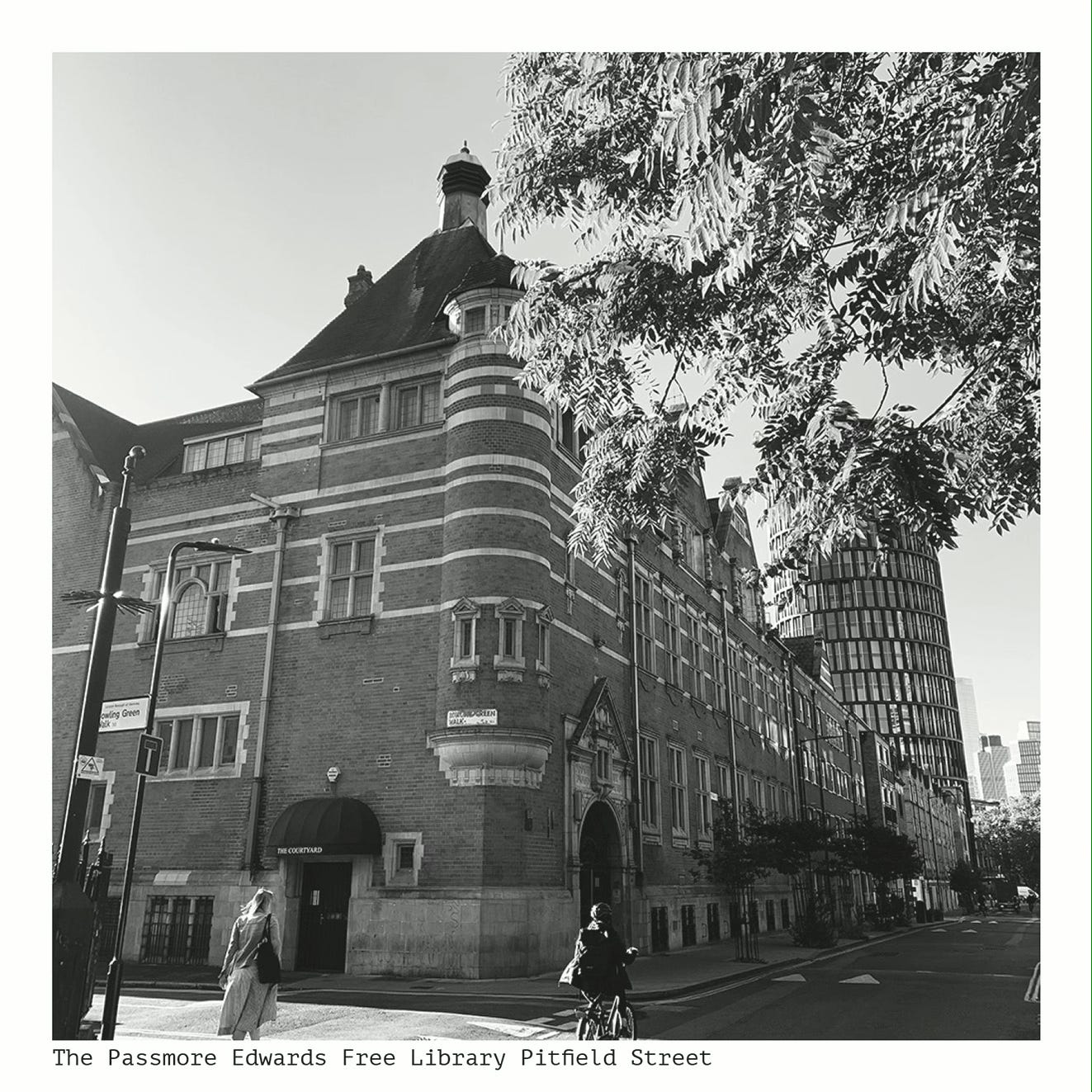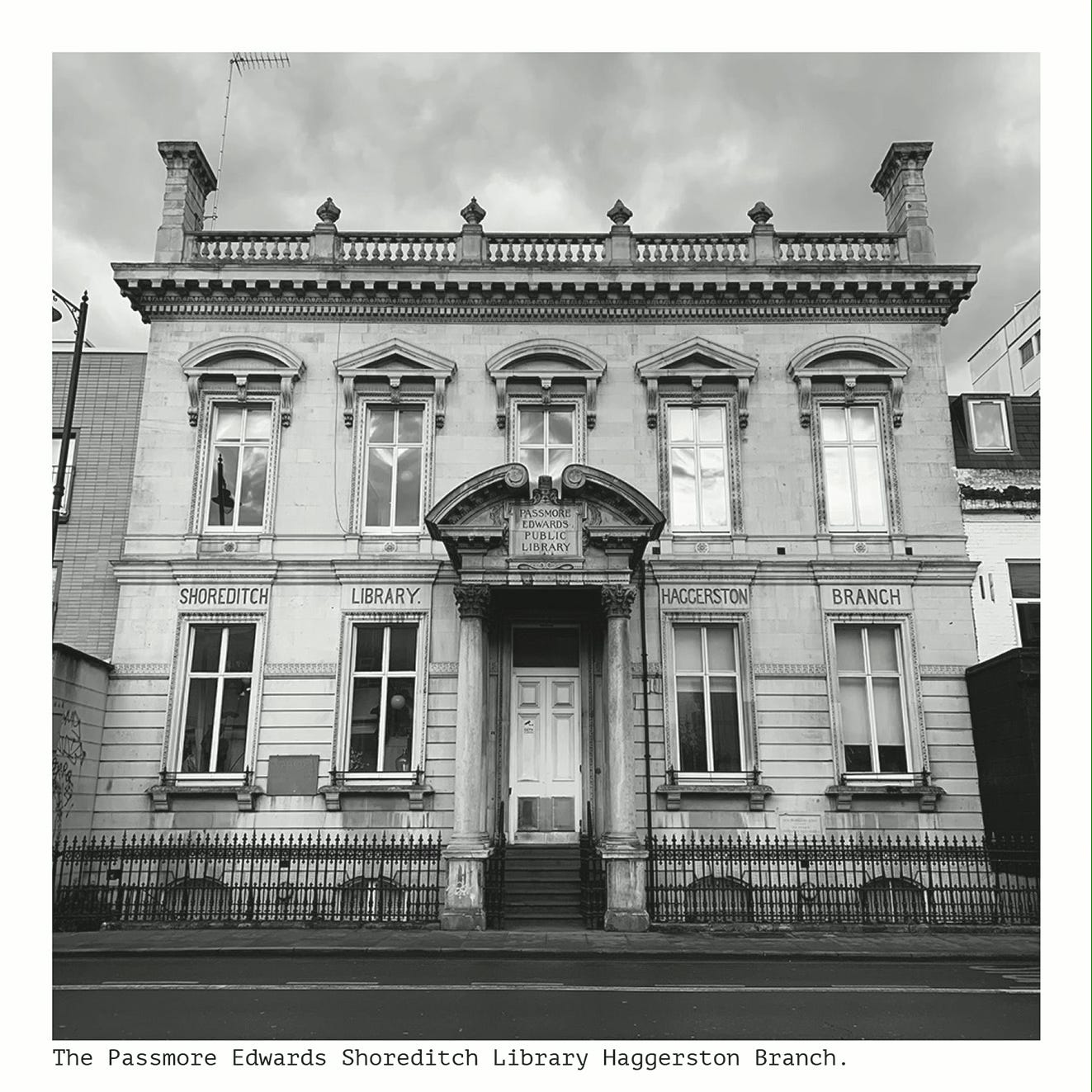A pair of terracotta figures sit on either side of the arched entrance to the Passmore Edwards Free Library on Pitfield Street. One is reading; the other holds her head in one hand and the illuminating lamp of reason in the other.
Reading and reasoning were the inspirations for the life of John Passmore Edwards, the library’s sponsor, who, by the time of his death in 1911, had donated over 90% of his substantial business fortune to philanthropic causes. In his lifetime he made more than seventy bequests to projects in London and his native Cornwall. These included funding for eleven drinking fountains, thirty-two marble busts of notable figures, twenty-four libraries, schools, art galleries, convalescent homes, hospitals, and, perhaps most famously, the remarkable art deco Passmore Edwards Settlement (later known as the Mary Ward Centre).
In Hoxton, he contributed funding for the Free Library on Pitfield Street, Haggerston Library close by on Kingsland Road and the drinking fountain in Hoxton Square.
Passmore Edwards was born in 1823 in Blackwater, Cornwall. His father made a modest living from brewing and selling beer and later from a small market garden that specialised in selling fruit- particularly strawberries. In ‘A Few Footprints’, biographical notes written by Passmore Edwards, he recalled that his early education was limited to basic reading, writing, and arithmetic, with few opportunities to read books. However, he was a diligent scholar, finding great inspiration in discovering the meanings of unfamiliar words in a family dictionary and saving the little money he could accumulate to buy books whenever possible. He was a youthful political campaigner against the Corn Laws, which imposed tariffs on grain imports to boost prices for landowning farmers, consequently raising the cost of food for the generally poor rural and urban populations. Even as a young man, he seemed destined for a life in writing and progressive politics although this destiny was only recognisable retrospectively. Recalling leaving his Cornish home he wrote: ‘---- at last, the parting day came, when, with overflowing emotion, I left home and friends to commence, in untried circumstances, an uncertain career.’
Passmore Edwards arrived in London in 1825, earning a living by writing newspaper articles and lecturing, particularly to temperance societies. He also busied himself with active involvement with many campaigning organisations, including the committee of the Early Closing Association; the Society for the Abolition of Capital Punishment; Political and Financial Reform Association; the Society for the Abolition of the Taxes on Knowledge; the Society for the Suppression of the Opium Trade; the Peace Society; the Ballot Society; the Committee for the Abolition of Flogging in the Army and Navy; and more than one committee for the promotion of National Education. London at that time was alive with campaigns, protests, lectures and popular public readings organised by civic societies promoting social progress against formidable odds. In later life, he lamented the decline in the fervour of popular campaigns writing:
‘Parliamentary Reform Acts tranquillised a portion of the public mind, and diminished the necessity for political agitation, and subsequent experience has shown that there was more eagerness shown by many to get the suffrage than to use it with advantage when got.’
His early attempts at establishing a magazine publishing business failed with the collapse of his health and bankruptcy.
Gradually his health recovered and through diligence and hard work, rebuilt his career. He eventually became the proprietor of two failing publications, Mechanics’ Magazine and Building News which he frugally managed transforming them into widely read and highly profitable publications He later wrote: ‘Then I felt for the first time in a fair field, with my hands at the plough and my head in the sunlight and the breeze. I afterwards became proprietor of several other periodicals.’
Business success allowed him to repay the debts he had incurred during his earlier business failure despite these having been fully discharged in law through bankruptcy. His astonished creditors held a celebratory dinner in his honour to celebrate his moral and business rectitude.
Success also provided the resources to fund his remarkable philanthropic endowments that still contribute to social progress more than a century after his death.
Passmore Edwards lived through the period of history when modern London was forged. Like many of his generation, he was an optimist who saw in the great transformations taking place around him the potential for creating a better, more peaceful and equitable world despite the very evident problems of the Victorian city. The free library he endowed on Pitfield Street would liberate poor Hoxton children from the deprivation he had experienced in his youth from inadequate education and lack of access to books. Passmore Edwards’ campaigning and philanthropy intended to expedite the arrival of the improved world he foresaw through civic action. His legacy and work continue.








As always Steve very interesting and highly informative. I am familiar with these buildings as handsome landmarks in the neighbourhood but never think as to the story of how the came into being. Thank you for sharing this knowledge!
Wonderful. The stories of these fine buildings brings life and knowledge to the city